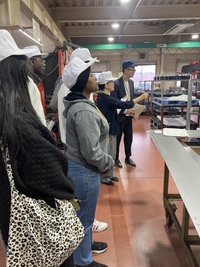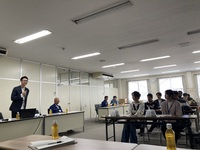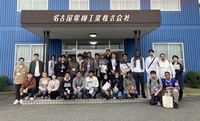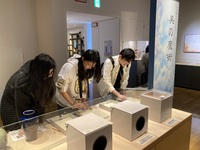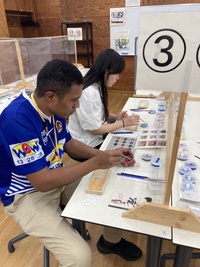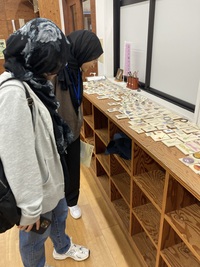Bus Tour to NAGOYA ELECTRIC WORKS CO., LTD. and Shippo Art Village was held
Global
Publishing : November 8, 2024
On November 1st (Friday), 2024, 29 students from 16 countries participated in the bus tour to NAGOYA ELECTRIC WORKS CO., LTD. and Shippo Art Village (Both located in Ama-shi). This event offered opportunities for international and Japanese students to discover Japanese culture and learn about engineering/industry-related topics. The event also motivated the participants to interact with other fellow students.
At NAGOYA ELECTRIC WORKS CO., LTD., after receiving an explanation of the company overview, participants attended the factory tour. There they observed the manufacturing process of the boxes that store the power supply and display unit of the VMS (Variable Message Signs /road information board). Also, participants saw a wide variety of VMS, from large VMSs (over 10 meters long) to small VMSs. Through seeing VMSs from a close distance and learning about the various ingenuities used in their manufacture, participants' interest in manufacturing (monozukuri) and engineering was deepened. After the tour, a question-and-answer session was held with employees of the manufacturing department, and many students asked various questions about the manufacturing time and materials used in the VMS production. Participants spent a truly fruitful time learning and interacting with employees of NAGOYA ELECTRIC WORKS CO., LTD.
At the Shippo (cloisonne) Art Village, through the exhibition and the hands-on experience of actual cloisonne production, participants were able to appreciate Owari cloisonne artifacts and wares and deepen their understanding of Japanese culture and local traditional industries.
The bus trip offered opportunities for participants to learn and deepen their understanding of manufacturing and engineering in the electrical equipment industry. They also studied the Japanese culture and local traditional industries. Finally yet importantly, participants were able to interact with fellow students and nurture friendship.

 Japanese
Japanese
